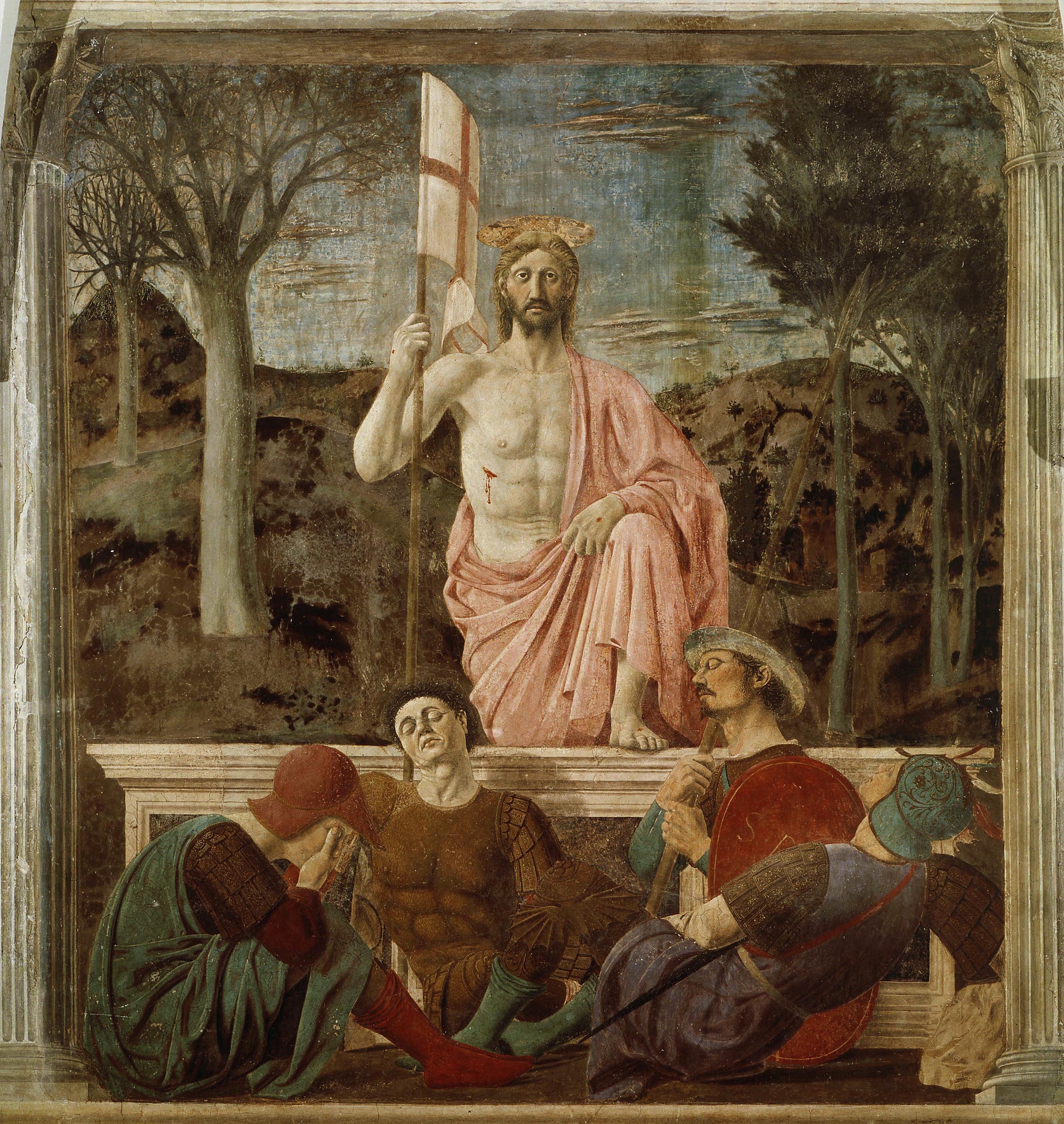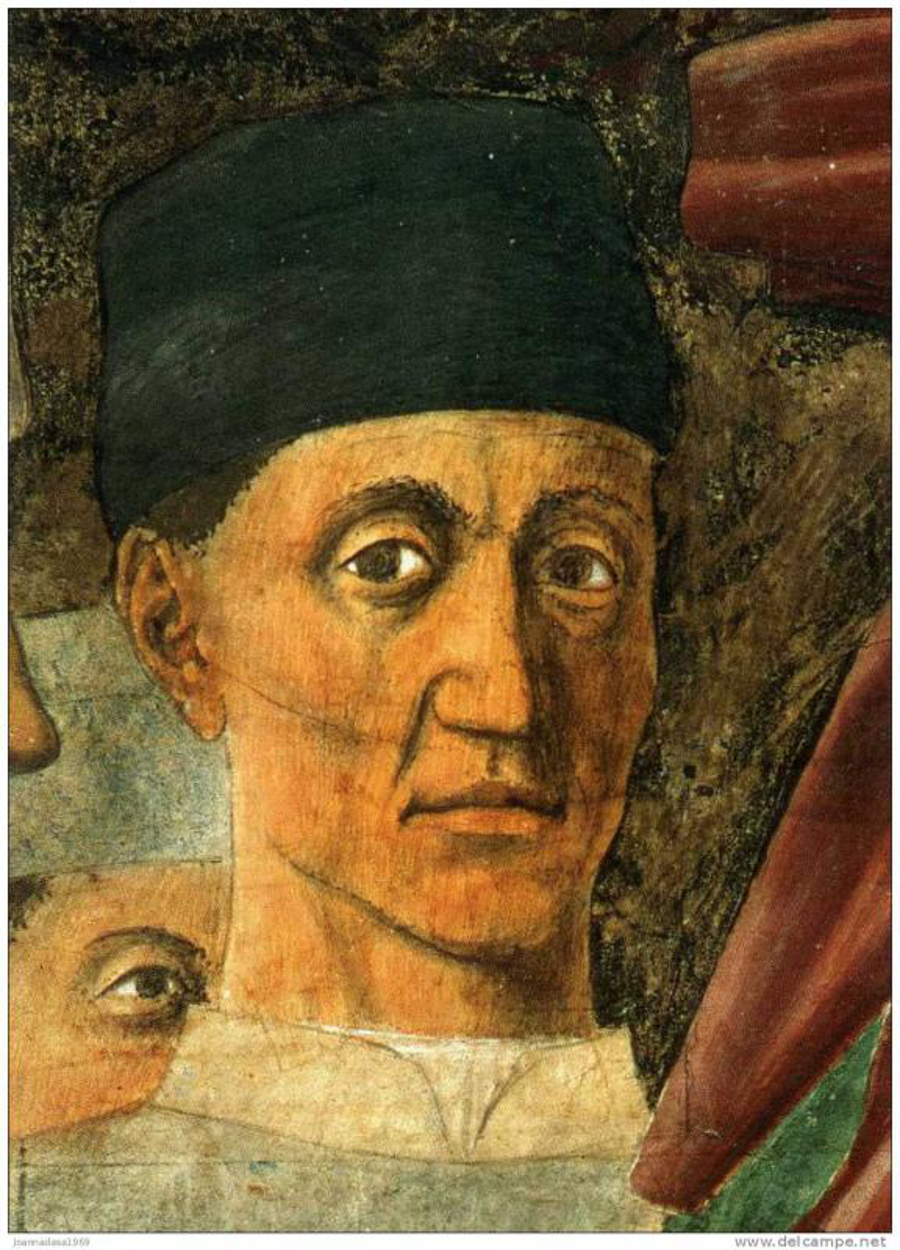Piero della Francesca, the Italian Renaissance master, was commissioned to paint this fresco for the Gothic-style Residenza, the communal meeting hall in Sansepolcro that was used solely by the Conservatori, the chief magistrates and governors, who before starting their councils, would pray before the image. Placed high on the interior wall facing the entrance, the fresco has for its subject an allusion to the name of the city (meaning Holy Sepulcher), derived from the presence of two relics of the Holy Sepulcher carried by two pilgrims in the 9th century.
Jesus is in the center of the composition, portrayed in the moment of His resurrection, as suggested by the position of the leg on the parapet of His tomb, which Piero renders as a classical sarcophagus. The British art historian Andrew Graham-Dixon notes that apart from the wound, Christ's "body is as perfectly sculpted and as blemish-free as that of an antique statue. But there are touches of intense humanity about him too: the unidealized, almost coarse-featured face; and those three folds of skin that wrinkle at his belly as he raises his left leg. Piero emphasises his twofold nature, as both man and God."
According to tradition and by comparison with the woodcut illustrating Vasari's Lives of the Painters, the sleeping soldier in brown armor on Christ's right is a self-portrait of Piero. The contact between the soldier's head and the pole of the banner carried by Christ is supposed to represent his contact with the divinity.
The fresco was nearly destroyed during World War II. It was spared only because Tony Clarke, a British artillery officer, defied orders and held back from using his troop's guns to shell the town. Clarke had never seen the fresco but had read Aldous Huxley's 1925 essay describing The Resurrection, which states: "It stands there before us in entire and actual splendour, the greatest picture in the world." Thanks to him, the town, along with its famous painting, survived. When the events of the episode eventually became clear, Clarke was lauded as a local hero and to this day a street in Sansepolcro bears his name.


 Piero della Francesca
Piero della Francesca